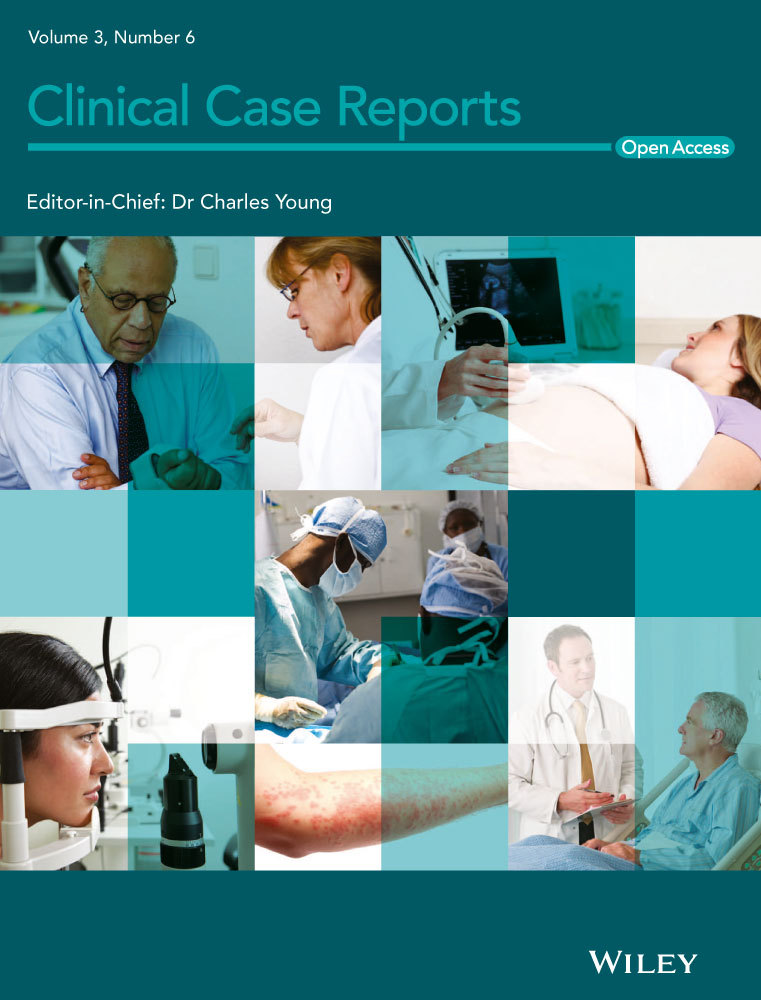Parapharangeal edema: an uncommon complication of TMJ arthroscopy
Key Clinical Message
Ohnishi in 1975 first described temporomandibular joint (TMJ) arthroscopy. Along with its extensive use, a range of complications has emerged. We describe a patient who experienced parapharyngeal swelling after undergoing arthroscopy. Prolonged intubation up to 1 hour postoperatively was required. The swelling resolved completely over 6 h without further intervention.
Case Presentation
We report a 42-year-old woman of Pakistani origin initially presenting with limited mouth opening and TMJ crepitus worse on the left side. She had failed to respond to conservative measures to treat pain, clicking, and locking of the TMJ. She had no other significant past medical history.
Investigations
An MRI scan confirmed that there was evidence of internal derangement of the left TMJ (Wilke stage II). The scan indicated that there was bone marrow edema at the left mandibular condyle and the articular disk is dislocated anterolaterally with its posterior edge contacting the mandibular condyle at 9 o clock position.
Treatment
The patient was scheduled to have left TMJ arthroscopy and arthrocentesis. The procedure was performed under nasoendotracheal general anesthesia. A careful joint puncture was made with an 18-g needle in the posterior recess of the superior compartment from an inferolateral approach, and then a trocar followed by insertion of the scope into the superior compartment. Backflow of the irrigation fluid was confirmed along with intra-articular visualization. The joint compartment was continually lavaged with approximately 200 ml of saline. The OnPoint-TM 1.2 mm Scope System was used. (Biomet).
Outcome and Follow-up
Patent backflow of the irrigation fluid was obtained. However, immediately postoperatively we noticed swelling and edema of the left lateral face and neck that would not settle. Inspection by the anesthetist with a laryngoscope confirmed the presence of floor of the mouth swelling and left parapharangeal swelling following extravasation of fluid (Fig. 1). Fifteen minutes postoperatively the swelling and edema worsened (Fig. 2).
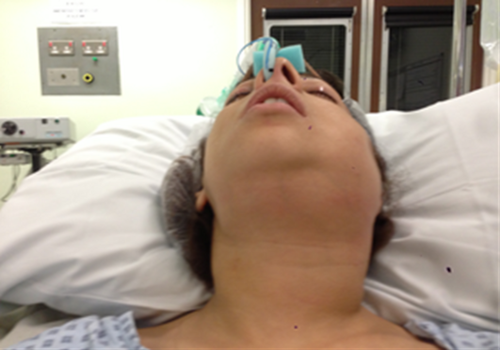
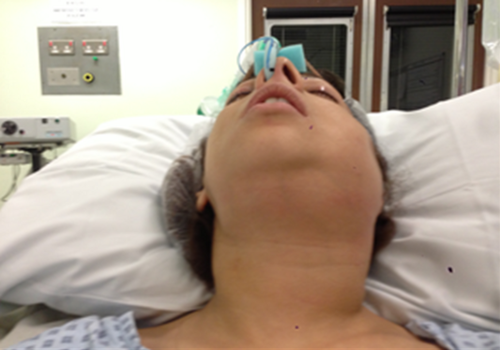
The decision was made to delay extubation by one hour because the patient was at risk of airway obstruction. One hour later the swelling had begun to resolve sufficiently for extubation. Six hours postextubation, the swelling and edema had completely resolved (Fig. 3). The patient was kept under observation overnight on the ward.
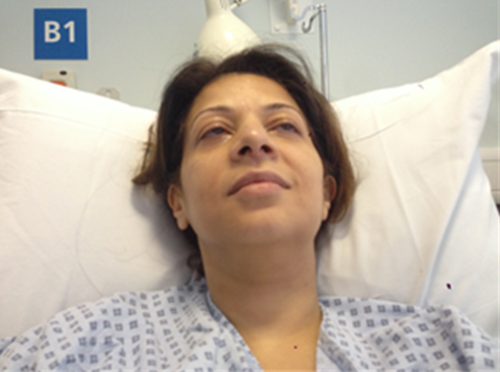
Discussion
As the number of performed TMJ arthroscopy increases, the case reports of related complications have also increased 3. Reported cases of complications include vascular injury 4, otologic injury 5, neurologic injury 5, instrument failure 6, and perforation of the middle cranial fossa 7 and extradural hematoma 8. There have only been a few published cases of the complication of parapharangeal edema resulting in a prolonged intubation period. Carls et al. in 1996 9 reported one case out of a study of 451 TMJ arthroscopies to have the complication of ipsilateral parapharyngeal swelling noticed at the end of the arthroscopic procedure and extubation was postponed for one hour. Ahmed et al. in 2012 10 reported another case out of a study of 244 patients that were kept in overnight for observation after prolonged intubation of 4 h because of involvement of the vocal folds in tissue edema. In both cases, extravasation of fluid through the medial joint capsule was attributed as the cause of the complication. Figure 4 illustrates the fascial spaces in the head and neck. Note the fluid leakage into the lateral pharyngeal space deep to the medial pterygoid muscle.
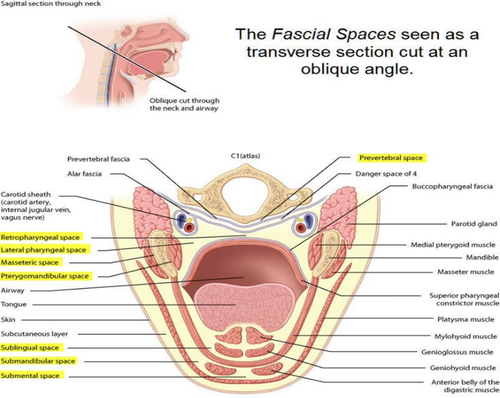
Learning Points
- An in-depth knowledge of the regional anatomy helps reduce the complications associated with arthroscopic lysis and lavage in the TMJ.
- This potentially life threatening complication shows that it is important to monitor the irrigation fluid accurately
- The natural history of this complication is to resolve completely in a few hours.
- Anesthetists should be aware of this potential complication and all patients should have their lateral pharyngeal wall examined carefully prior to extubation.
- Keeping the patient for observation overnight may be prudent
Conflict of Interest
None declared.



